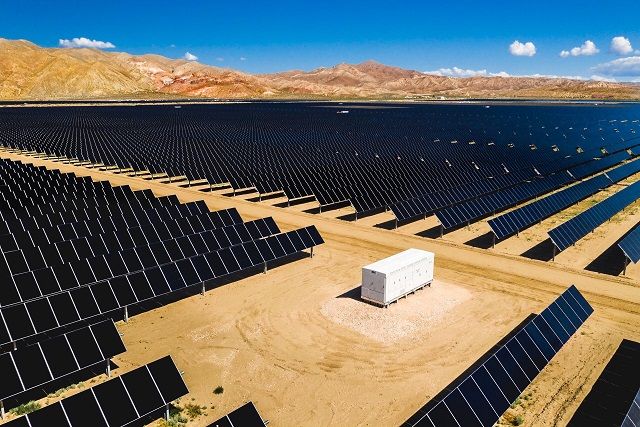LONDON and NEW YORK — The scope for adding batteries to wind projects is expanding around the world, building on the considerable momentum that already exists for hybrid solar-plus-storage plants.
In the U.S., solar-plus-storage is an increasingly mainstream proposition for large-scale renewables developers. In Europe, the pairing of batteries with utility-scale solar is still less common, though a peek at the midterm development pipeline suggests that’s about to change.
Wind-plus-storage has been a rarer beast in global markets, but projects in Italy, Japan, the U.S. and elsewhere indicate a shift in the way developers are thinking.
Wind playing catch-up
The U.S. has seen a flurry of wind farm repowerings over the past few years, and such project upgrades will be increasingly common in Europe as Germany’s first subsidized wind farms see their payments come to an end in 2020.
As projects are re-engineered, the option of adding batteries will hold interest for many developers.
“If you were to repower a wind project, you would have to look at the option of storage — you'd be foolish not to,” said Jake Dunn, commercial lead for Vattenfall’s innovation team on the sidelines of the recent Energy Storage Summit in London. Sweden’s Vattenfall has completed both wind-plus-solar and wind-plus-storage projects in the U.K.
One of the most obvious benefits of co-locating wind, solar and/or storage is the ability to take advantage of — and maximize — existing grid infrastructure.
Given that the major challenges for developers in Europe are congested grids (especially the Netherlands), permitting bottlenecks (especially Germany) and planning approvals (pretty much everywhere), these benefits look even sweeter.
“You already have the land and you already have the grid connection, so planning is that much easier,” said Dunn.
The same logic holds true in the U.S., where NextEra Energy Resources last year unveiled a 700-megawatt triple-hybrid project in Oklahoma combining wind, solar and storage.

Energy storage is a central component for many solar projects in the U.S. (Credit: 8minute Solar Energy)
Wind turbine maker Siemens Gamesa believes that over the long run, grid-scale storage will be “more of a hybrid play than a standalone storage play,” Christine Grey, director of storage and hybrid systems in the Americas, told Greentech Media in December.
As the technology matures, Grey believes a third of U.S. wind farms could be built with on-site storage.
A number of factors have made wind-plus-storage facilities rarer than solar-plus-storage in the U.S. Chief among them are the less-predictable nature of wind energy compared to solar and the fact that storage plants paired (and charged) with solar are eligible for the federal Investment Tax Credit.
Dan Shreve, head of Wood Mackenzie’s global wind research practice, said the wind industry faces pressure to incorporate storage technologies.
“Wind developers recognize that solar is a growing threat in general, so hybridization of their product offering to include storage or solar on top of wind is going to be in their best interest,” he said.
“Certainly, their clients are all doing that, whether it’s the utilities or the [independent power producers], even the investment community — everyone is doing 'all of the above,'” Shreve said.
Vattenfall expects storage to play an increasingly prominent role in offshore wind. The economics of such hybrids are not yet clear-cut across the board, Dunn said, but the business case is “very close” to moving firmly into the black in many instances.
Corporate deals another tailwind
Another tailwind for storage-plus projects is the corporate renewables market, where a small but important group of companies are looking to meet their real-time, 24/7 energy needs with wind and solar power — among them Daimler and Google.
In contemplating how big that market can become, the question is whether companies will be willing to pay a premium for a steady supply of clean power as opposed to more traditional low-cost renewable contracts.
“There are some markets, such as southwest Australia, where wind and solar together bring the capacity factor to 60 to 70 percent, in which case maybe the remaining 30 percent could be lithium-ion,” said Chris Buckland, technical director at solar developer Lightsource BP.
In Northern Europe, solar has a capacity factor of just 12 or 13 percent, according to Buckland. As offshore wind capacity factors improve, he estimated that combining solar and wind of all stripes could yield a capacity factor of 60 percent, leaving a slightly bigger shortfall.
“The gap to fill with lithium is perhaps interesting. However, these very large corporate users are not going to be paying a premium for their [power-purchase agreements].”
Hydrogen on the horizon
Not all major renewables developers are fully sold on the lithium-ion story. Lightsource BP, which is half-owned by oil giant BP, expects to leap-frog lithium-ion batteries for its biggest solar projects and instead look ahead to the hydrogen opportunity.
“In Spain, we're constructing 250 megawatts of solar,” Buckland said. “The conventional story, dropping in a lithium-ion battery, means for a 250-megawatt solar plant adding half a gigawatt of batteries. That doesn't seem to make economic sense or be very sensible.”
“That might be different on the West Coast of the U.S. or in Australia, but a lot of that impetus has to do with grid aspects rather than commercial ones," Buckland said. "We [manage] 2 gigawatts of solar in the U.K., but there is not a case to retrofit those systems with storage."
“Together with BP, we're exploring other opportunities as far as storage is concerned. The conversation for this year, and going forward longer-term, is about hydrogen," he said.




